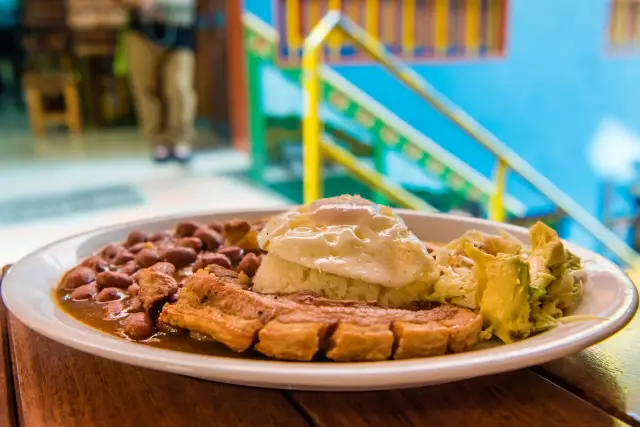In Colombia, gastronomy is much more than food: it's a form of identity, a source of pride, and a constant invitation to discovery. Each region has its own story told through unique flavors, cultural influences, and ancestral traditions that, in 2025, will continue to be the protagonists of unforgettable experiences.
What makes Colombian cuisine special is the combination of native products, local techniques, and family flavor. On a single trip, you can try a coastal sancocho, a Tolima lechona, or a Santander mute, and each dish has a story behind it, a reason for being, and a secret ingredient that turns it into an emotional experience. For domestic tourism, these routes offer the opportunity to rediscover the country from a different perspective: that of cuisine.
In 2025, gastronomy is expected to continue to be one of the major drivers of tourism in Colombia. The opening of culinary festivals, the gastronomic challenges organized in different departments, and the visibility Colombian cuisine has gained in international media invite us to explore flavors in greater depth. Planning getaways to explore markets, food fairs, or traditional restaurants is no longer just a trend, but a new way of traveling.
Flavorful trips require planning. Choosing destinations, booking in advance, and purchasing tickets early is key to enjoying the best of each region without any setbacks. Fortunately, there are increasingly more platforms and promotions that make traveling through Colombia affordable and efficient, making it easier to fulfill the dream of experiencing a complete gastronomic tour.
Beyond the culinary aspects, these routes connect with humanity. It's in the kitchen that the most ancient knowledge is found, and those who prepare the dishes are often guardians of family and cultural stories worth telling. Therefore, exploring Colombia through its flavors is not just a tourist attraction; it's a way of understanding ourselves as a country.
Route through the Cauca Valley: sweet and vibrant flavors
The Cauca Valley has earned a special place in the hearts of those seeking intense flavors and recipes that blend the traditional with the innovative. Cali, its capital, is the epicenter of a cuisine that combines Afro-Colombian, Indigenous, and Spanish influences. Dishes such as aborrajado (a type of food), sancocho de gallina (a type of chicken stew), and champús (a type of soup) are essential parts of this experience.
The tour of this region can extend to municipalities such as Palmira or Buga, where you'll find small family-run restaurants and markets full of fresh ingredients. For those traveling from other regions, tickets to Cali are usually readily available and competitively priced, especially if purchased in advance or during promotional dates.
Discover flavors with affordable tickets to the Caribbean Coast
Colombia's Caribbean Coast is a gastronomic paradise combining fresh seafood, spicy flavors, and techniques passed down through generations. Cartagena, Santa Marta, and Barranquilla offer distinct yet equally intense experiences. From a Cartagena black sea bass to Barranquilla mullet rice, the Caribbean is pure diversity.
In 2025, several airlines and agencies are offering affordable tickets to these cities, making this route an ideal option for those looking to travel on a budget. Furthermore, many Caribbean food festivals are held in the first few months of the year, so planning ahead will be key to making sure you don't miss any of them.
Antioquia and Santander: mountain cuisine with identity
In Antioquia, flavors come with warmth. Medellín, as a starting point, offers everything from stuffed arepas to more elaborate dishes like bandeja paisa. But it's also worth heading out to towns like Santa Fe de Antioquia or Jardín, where traditional cuisine is proudly served with centuries-old recipes.
On the other hand, Santander stands out for its distinctive cuisine. Bucaramanga, Barichara, and San Gil offer everything from hormigas culonas (big-ass hormigas) to cabro con pepitoria (cow with pepitoria), as well as the typical arepas made with peeled corn. This region surprises those unfamiliar with its strong flavors and techniques that have been preserved for generations.
Bogotá and the Cundiboyacense plateau: tradition and modernity
The Colombian capital is increasingly recognized as a culinary epicenter. Here, you'll find everything from haute cuisine to farmers' markets, offering authentic dishes from the highlands. Ajiaco (a type of ajiaco), cuchuco (a type of wheat cuchuco), Bogotá tamales (a type of tamales from Bogotá), and empanadas (a type of empanada from Boyacá) are just a sample of what you can discover.
By 2025, Bogotá will host at least a dozen food festivals, many of them themed and featuring local producers. The city, in addition to being a hub for air travel, is an excellent base for organizing trips to places like Villa de Leyva, Zipaquirá, or Tunja, where food is also part of the cultural heritage.
The Amazon, a gastronomic gem to be discovered
Beyond the traditional routes, the Colombian Amazon is beginning to feature prominently in the country's culinary landscape. In Leticia and its surrounding areas, you can find exotic products such as pirarucú, copoazú, and ají negro. Indigenous cuisine, little explored by mass tourism, becomes a unique experience of connection with the land.
Traveling to the Amazon involves different logistics, but many airlines are investing in improved connectivity and offering more affordable tickets. For those seeking a unique and in-depth experience, this route represents one of the country's greatest culinary treasures.
FAQs
Which city in Colombia has the best gastronomy?
Each city has its own charm, but Bogotá, Medellín, and Cali stand out for their gastronomic variety, quality, and evolution.
How is the gastronomic sector in Colombia?
Growing. New restaurants, fairs, and international recognition are consolidating Colombia as an emerging culinary destination.
What should a gastronomic route have?
A variety of dishes, a connection to local culture, access to fresh produce, and the opportunity to experience authentic cuisine with our chefs.
What position does Colombia occupy in world gastronomy?
Colombia has begun to stand out, especially in Latin American rankings. Although it's not yet at the top, its cuisine is gaining recognition for its richness and authenticity.
